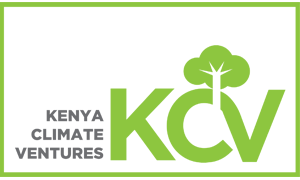According to The Global Goals, hunger is the leading cause of death in the world. Even though our planet is rich in resources, different reasons have contributed to hunger and malnutrition. These include climate change, economic downturns, unequal access to resources and conflict.
According to estimates by The United Nations, nearly 690 million people are hungry. The world population will be up by 10 million in one year and 60 million in five years which implies an even higher number going hungry in the future should swift measures to provide food and charitable relief to the most affected regions not be taken.
SDG 2 aims to end all forms of hunger and malnutrition by 2030. The goal hopes to ensure a sufficient and nutritious food supply for everyone throughout the year. There are 8 set targets to the achievement of SDG 2.
Targets of SDG 2
Target 2.1: Universal access to safe and nutritious food.
By 2030 end hunger and ensure access by all people, particularly the poor and people in vulnerable situations, including infants, to safe, healthy, and sufficient food all year round. Our client Dashcrop Limited boosts health and nutrition through the production of different brands of flours and which targets infants. These include natural, wholemeal gluten-free flours from grains such as sorghum, finger millet, amaranth and cassava.
Target 2.2: End all forms of malnutrition.
By 2030 end all forms of malnutrition, including achieving by 2025 the internationally agreed targets on stunting and wasting in children under five years of age, and address the nutritional needs of adolescent girls, pregnant and lactating women, and older persons.
Target 2.3: Double the productivity and incomes of small-scale food producers.
By 2030, double the agricultural productivity and incomes of small-scale food producers, in particular women, indigenous peoples, family farmers, pastoralists, and fishers, including through secure and equal access to land, other productive resources, and inputs, knowledge, financial services, markets and opportunities for value addition and non-farm employment. Through KCV’s support, Horn Afrik Gums Limited has actively engaged pastoralist communities hence providing them with extra income through collection of gums and raisins. Botanic Treasures in Machakos County and Kilifi Moringa in Kilifi County have also partnered with KCV and are working in areas considered unproductive. Both companies support food security through Moringa farming and/or processing.
Two of our portfolio companies, Exotic EPZ Limited and Onja Uone Limited are working with smallholder farmers who are increasing their productivity and incomes by including macadamia trees in their crop mix through intercropping.
More targets
Target 2.4: Sustainable food production and resilient agricultural practices.
By 2030, ensure sustainable food production systems and implement resilient agricultural practices that increase productivity and output. Help maintain ecosystems, strengthen capacity for adaptation to climate change, extreme weather, drought, flooding, and other disasters, and improve land and soil quality. Our client Hydroponics Africa Limited offers affordable and sustainable farming methods through the hydroponics technology that enables efficient use of water and land resources. Mace Foods Limited supports farmers to secure certified chilli and indigenous vegetable seeds and also provides agronomic support.
Target 2.5: Maintain genetic diversity in food production.
By 2030, maintain the genetic variety of seeds, cultivated plants, domesticated animals, and their related wild species through soundly managed and diversified seed and plant banks at the national, regional, and international levels. Promote access to and fair and equitable sharing of benefits from utilizing genetic resources and associated traditional knowledge, as internationally agreed.
Target 2.6: Invest in rural infrastructure, agricultural research, technology, and gene banks.
Increase investment, including through enhanced international cooperation, in rural infrastructure, agricultural research and extension services, technology development, and plant and livestock gene banks to improve agricultural productive capacity in developing countries, mainly least developed countries.
Target 2.7: Prevent agricultural trade restrictions, market distortions and export subsidies.
Correct and prevent trade restrictions and distortions in world agricultural markets, including through the parallel elimination of all forms of agricultural export subsidies and all export measures with equivalent effect, following the mandate of the Doha Development Round.
Read also: How well do you know the SDGs? SDG one…
Target 2.8: Ensure stable food commodity markets and timely access to information.
Adopt measures to ensure the proper functioning of food commodity markets and their derivatives and facilitate convenient access to market information, including on food reserves, to help limit extreme food price volatility.
The Kenya Climate Ventures (KCV) has greatly impacted Kenya’s livelihood by providing targeted financial and managerial assistance to innovative, early, and growth-stage businesses investing in climate-smart technologies.












